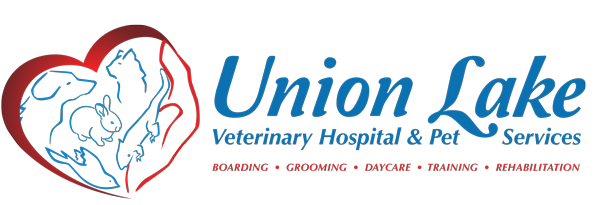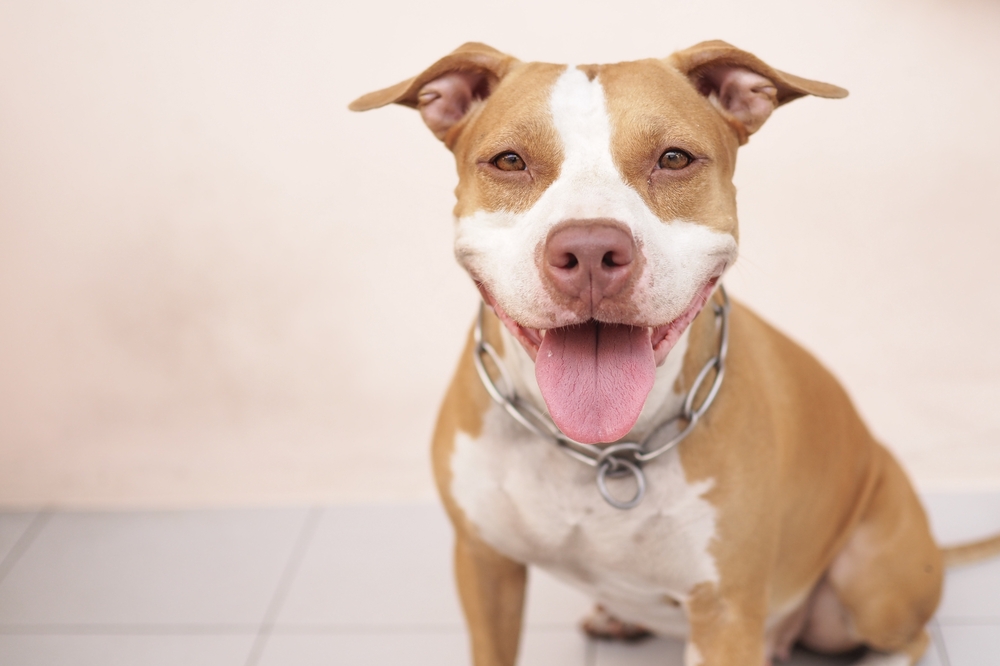Pit bulls have had a lot of bad press, but they aren’t one breed of dog. They are more a type of dog. We often refer to bulldogs as well as dogs from several terrier breeds as “pit bulls”, but pit bulls are really more of a type of dog rather than a breed. Many dogs labeled as pit bulls are actually a mix of breeds, with a hodgepodge of breed personalities that make up their nature.
But hundreds of towns and cities have banned pit bulls, and some insurance policies and housing options exclude them. Even dog lovers may cross the street with their dog to avoid encountering a dog with a pit bull appearance. Are pit bulls just bad eggs? Or, is this prejudice toward a loveable, bright breed?
The team at Union Lake Veterinary Hospital sets out to explore the world of pit bulls and explain why we believe they are a dog worth the same love and affection we give to other breeds.
The Origins of Pit Bulls
While ‘pit bull’ is a general term for certain dogs originating from the bulldog or terrier families, most people have a sense of what pit bulls look like. They are medium to large in stature with short hair, a stocky build, wide head, short face, and strong jawline. But appearances can be deceiving. Quite a few breed combinations can result in a similar appearance. Some of these dogs, when given a DNA test, have no dominant breed or little DNA from the typical pit bull breeds
We believe pit bulls to have originated from a bull-baiting ancient breed called Mastiff “bullenbeissers”. These dogs were bred for strength and were capable of biting the head or neck of a bull, bear, lion, or other large game mammals. When this became illegal in the late 1800s, these dogs were bred to be smaller with more agility and strength.
During this period, pit bulls were generally considered to be one of the more gentle, loyal, and friendly breeds around. They were viewed as a trustworthy family pet, good with children, and they became a favorite type of dog for many years due to their gentle and loving natures.
Unfortunately, in the 1980s, it became popular to breed pit bulls for their power and aggression, then fight them. This resulted in many dogs being bred unethically for dog fight arenas. The media publicized these brutal stories, creating a bad reputation for dogs labeled as pit bulls. They aren’t the first breed to be labeled as dangerous by popular media and given a bad rep. Over the last 150 years, bloodhounds, German shepherds, Rottweilers, and Dobermans all suffered from reputations as the most dangerous dogs.
The (Mis)Information on Pit Bulls and Aggression
The idea that a dog’s personality is based entirely on their pedigree is false. Dogs are individuals. Traits like aggression, fear, loyalty, confidence, and heroic effort are too often erroneously assigned to particular breeds. Some breeds sniff out landmines and find people who are lost in avalanches, but that doesn’t mean that those breeds are heroic. A lot of their actions are based on their training.
Dog fights among larger, more powerful dogs are more likely to be reported than those among small breeds (often referred to as “ankle biters”) since there are more likely to be injuries. Small breeds can be aggressive (chihuahuas, Dachshunds) too though and bite other dogs.
According to scientific research, there is no correlation between a dog’s breed and outright aggression. 85% of dog bite fatalities are from unneutered dogs. And what most of these aggressive dogs had in common was being undersocialized, abused, neglected or trained to attack and defend their territory.
The Legal Ramification for Pit Bulls
To date, there are over 900 cities that have banned pit bulls through breed-specific legislation (BSL). This is a drastic response to dogs we identify as pit bulls. Between there being no such breed as pit bull, a mix of breeds making up many so-called pit bulls, and our inability to correctly identify breed from appearance, this legislation lends itself to discrimination. It unfairly discriminates against these terrier-type dogs, or those that simply look like pit bulls.
In areas where pit bulls are still legal to own, many pet owners still avoid dogs who have pit bull facial characteristics. In fact, the majority of shelters are filled with terrier mixes that have been labeled as being a pit bull or mix. This stigma has resulted in avoidance, abandonment, abuse and euthanasia of otherwise wonderful dogs. People think only bad or aggressive dog owners have pit bulls.
The truth is that these dogs are individuals and when raised and trained correctly, they make loving additions to your home. Several presidents have owned pit bulls. And millions of families have them, and they make great pets, therapy dogs and service animals.
The Bottom Line
Any dog can become aggressive or prone to bite when they haven’t been socialized or trained. If a dog is brought up to attack, that will naturally be their nature until the behavior is unlearned. To raise any well-behaved dog, the following must be taken into consideration.
- Give them positive rewards training and teach them basic commands at an early age or when you adopt them.
- Do not reward or encourage aggression or roughhousing by your dog.
- Instill good socialization skills by introducing them to other animals and people as soon as you bring them into the home (and after vaccinations are completed).
- Get to know your dog’s level of comfort around new situations, kids, cats, and other animals and avoid any triggers for them to chase or behave aggressively.
- Keep your dog on a leash and supervised when out and about.
- Discuss with your veterinarian the ways to improve your dog’s training, socialization, and behavior.
If you have a loveable pit bull and want to learn more about their care and socialization, please contact us. We love our pitties and are here to help!

